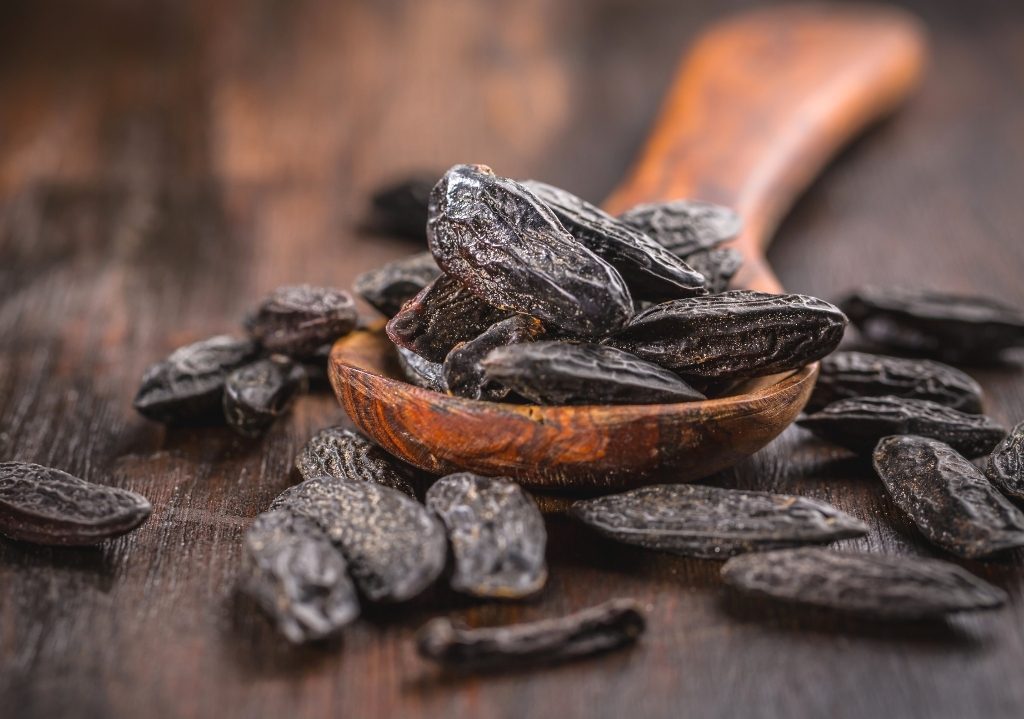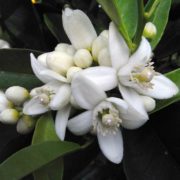Exploring the Elegance of Tonka Perfume

Table of Contents
-
What is Tonka Bean?
-
The Scent Profile of Tonka Bean
-
Tonka Bean in Perfumery
-
The Healing Properties of Tonka Bean
-
Safety and Precautions
The appeal of Tonka perfume lies in its rich, warm, and sweet aroma that captivates the senses. This blog post explores the unique characteristics of Tonka bean, its use in perfumery, and why it has become a beloved ingredient in creating sophisticated and memorable scents.
The Essence of Tonka Bean
What is Tonka Bean?
Tonka bean is the seed of the Dipteryx odorata tree, native to Central and South America. It is renowned for its complex scent profile, which combines sweet, spicy, and slightly woody notes. The rich and captivating aroma of Tonka bean is primarily due to its high coumarin content, which gives it a distinctive, comforting, and sophisticated character.
The Scent Profile of Tonka Bean
Sweet and Comforting
Tonka bean is often described as having a sweet aroma reminiscent of Vanilla, but with a more subdued and natural undertone. This sweetness provides a comforting and inviting quality to perfumes, making them warm and cozy.
Spicy and Warm
In addition to its sweetness, the Tonka bean has spicy undertones, with hints of Cinnamon and Clove. These spicy notes add warmth and complexity, enhancing the overall depth of the fragrance.
Woody and Earthy
Tonka bean also features subtle woody and earthy notes, which provide a grounding effect and balance the sweetness and spice. This woody aspect adds sophistication and elegance to the scent.
Nutty and Rich
A slight nutty aroma rounds out the Tonka bean’s scent profile, adding an extra layer of richness. This nutty quality contributes to the overall complexity and allure of the fragrance.
Tonka Bean in Perfumery
A Versatile Base Note
Tonka perfume serves as a versatile base note in fragrances, providing a warm and comforting foundation that lingers on the skin. Its sweet and slightly spicy aroma blends seamlessly with a variety of other notes, allowing perfumers to create complex and harmonious fragrances that captivate the senses.
Enhancing Gourmand Scents
In gourmand fragrances, which are inspired by edible scents, Tonka perfume is a popular choice. The natural sweetness and nutty undertones of Tonka bean add a luxurious quality to these perfumes, making them both inviting and irresistible. When combined with notes like honey or chocolate, Tonka bean elevates gourmand compositions to new heights.
Balancing Floral and Fruity Notes
In floral and fruity perfumes, Tonka perfume acts as a balancing agent, adding warmth and depth to lighter, more delicate notes. Its rich and comforting scent provides a beautiful contrast to the brightness of floral and fruity elements, resulting in a well-rounded and sophisticated fragrance.
Creating Masculine Scents
Tonka bean is also an essential component in many masculine fragrances. Its woody and spicy undertones add a solid and refined quality to these scents, making them both bold and elegant. When paired with notes like cedarwood, sandalwood, and spices, the Tonka bean contributes to a dynamic and distinguished scent profile.
The Healing Properties of Tonka Bean: A Natural Wonder
Tonka bean is not only revered for its captivating fragrance but also for its traditional medicinal properties. This remarkable seed, harvested from the Dipteryx odorata tree, has been used for centuries in various cultures for its potential health benefits.
Historical Use of Tonka Bean in Traditional Medicine
Indigenous Healing Practices
Indigenous peoples in the Amazon basin have long recognized the value of tonka bean. These communities have used tonka beans in various forms to treat a range of ailments and to enhance overall well-being. The beans were often ground into a powder, infused in liquids, or used as part of poultices and salves.
Tonka Bean in Folk Medicine
In addition to its use in indigenous practices, tonka bean has also found a place in folk medicine across different cultures. It was commonly employed in remedies aimed at treating respiratory conditions, easing pain, and promoting relaxation. The bean’s natural compounds were believed to offer therapeutic effects, making it a valuable component in traditional medicinal practices.
Therapeutic Compounds in Tonka Bean
Coumarin: The Key Compound
The primary active compound in tonka bean is coumarin, a natural aromatic chemical known for its sweet scent and potential health benefits. Coumarin is also found in other plants, such as Sweet Clover, Cinnamon, Vanilla, and licorice, and is responsible for the pleasant fragrance and some of the medicinal properties attributed to these plants.
Potential Health Benefits of Coumarin
Coumarin has been studied for its potential therapeutic effects, which include:
Anticoagulant Properties
Coumarin is known for its anticoagulant (blood-thinning) properties, which can help in preventing blood clots. This has made it a subject of interest in the development of medications used to treat and prevent conditions like deep vein thrombosis and pulmonary embolism. However, it is important to note that high doses of coumarin can be toxic, and its use should be carefully managed under medical supervision.
Anti-inflammatory Effects
Research has suggested that coumarin may possess anti-inflammatory properties, which can help reduce inflammation in the body. This makes tonka bean potentially useful in managing conditions characterized by chronic inflammation, such as arthritis and certain skin disorders.
Antimicrobial Activity
Coumarin has also demonstrated antimicrobial activity, which means it can help inhibit the growth of certain bacteria and fungi. This property has been explored in the context of natural preservatives and in treating minor infections.
Traditional Healing Applications of Tonka Bean
Respiratory Health
Tonka bean has been traditionally used to support respiratory health. In folk medicine, it was often utilized to soothe symptoms of respiratory conditions such as asthma, bronchitis, and coughs. The bean’s aromatic compounds were believed to help clear the airways and ease breathing.
Pain Relief
The anti-inflammatory and analgesic properties of tonka bean made it a popular remedy for pain relief. It was commonly used in poultices and salves to alleviate muscle pain, joint pain, and other types of discomfort. The warming sensation provided by the bean’s compounds was thought to help relax muscles and reduce pain.
Relaxation and Stress Relief
Tonka bean has also been associated with relaxation and stress relief. The soothing aroma of the bean’s essential oils was used in aromatherapy practices to promote a sense of calm and well-being. Inhaling the fragrance of tonka bean was used to help reduce anxiety, improve mood, and encourage restful sleep.
Modern Perspectives on Tonka Bean’s Healing Properties
Aromatherapy and Well-being
In modern aromatherapy, tonka bean continues to be valued for its calming and grounding effects. Essential oils and extracts derived from tonka bean are used in diffusers, massage oils, and bath products to create a relaxing atmosphere and enhance mental and emotional well-being.
Natural Skincare
The anti-inflammatory and antimicrobial properties of tonka bean have made it a popular ingredient in natural skincare products. It is often found in lotions, creams, and balms designed to soothe irritated skin, reduce redness, and promote healing. The bean’s natural fragrance also adds a pleasant scent to these products.
Complementary Medicine
While tonka bean is not commonly used in mainstream medicine, its potential health benefits have been recognized in complementary and alternative medicine practices. Practitioners of herbal medicine and naturopathy may incorporate tonka bean extracts and essential oils into their treatments to support overall health and well-being.
Safety and Precautions
Potential Toxicity of Coumarin
Despite its potential health benefits, it is important to note that coumarin can be toxic in high doses. Excessive consumption of coumarin-containing products can lead to liver damage and other adverse effects. Therefore, tonka bean should be used with caution, and it is advisable to consult with a healthcare professional before using it for medicinal purposes.
Allergic Reactions
As with any natural product, there is a risk of allergic reactions when using tonka bean. Individuals with known allergies to coumarin or related compounds should avoid using tonka bean products. It is also recommended to perform a patch test before using tonka bean-based skincare products to ensure there are no adverse reactions.
Conclusion
Tonka bean is a remarkable seed with a rich history of use in traditional medicine and a wide range of potential health benefits. From its anticoagulant and anti-inflammatory properties to its soothing effects on respiratory health and pain relief, tonka bean has much to offer. While modern research continues to explore its therapeutic potential, tonka bean remains a valuable ingredient in aromatherapy, natural skincare, and complementary medicine.
By understanding the healing properties of tonka bean and incorporating it mindfully into your wellness routine, you can enjoy the benefits of this natural wonder. As always, it is important to use tonka bean products responsibly and consult with a healthcare professional if you have any concerns or underlying health conditions.
The Tonka perfume is a captivating and versatile ingredient that has earned its place in the world of perfumery. Its rich, warm, and complex aroma adds depth and sophistication to a wide range of fragrances. Whether you prefer sweet gourmand scents, elegant floral compositions, or bold masculine fragrances, Tonka perfume has something to offer to everyone.





















Leave a Reply
Want to join the discussion?Feel free to contribute!